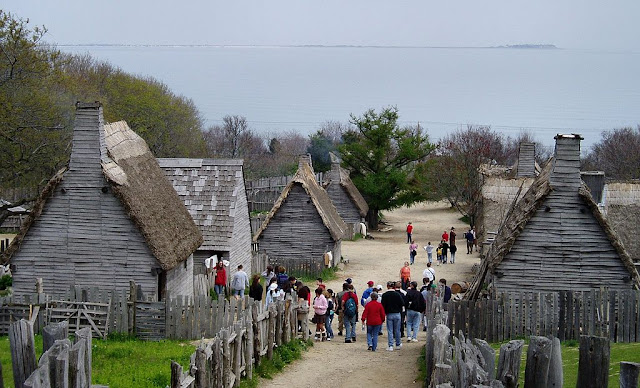The National WWII Museum, formerly known as the D-Day Museum, is a military history museum located in the Central Business District of New Orleans, Louisiana, on Andrew Higgins Drive between Camp Street and Magazine Street. The museum focuses on the contribution made by the United States to Allied victory in World War II. Founded in 2000, it was later designated by the U.S. Congress as America's official National World War II Museum in 2003.[2] The Museum maintains an affiliation with the Smithsonian Institution.[3] The mission statement of the Museum emphasizes the American experience in World War II.[4]
Museum description
A C-47 on display in the museum atrium
The Museum opened on June 6, 2000, the 56th anniversary of D-Day, and has since undertaken a large-scale expansion project which is still ongoing. In addition to the original building, known as the Louisiana Memorial Pavilion, the Museum has since opened the Solomon Victory Theater, the John E. Kushner Restoration Pavilion, the U.S. Freedom Pavilion, the Boeing Center, and the "Road to Berlin" portion of the Campaigns of Courage pavilion. (The "Road to Tokyo" portion of the Campaigns of Courage pavilion is currently under construction and is tentatively scheduled to open in 2015.) There are further plans to construct what will be called the Liberation Pavilion.
Within the large atrium of the Louisiana Memorial Pavilion several aircraft are on display, including a Supermarine Spitfire, Messerschmitt Bf 109, Douglas SBD Dauntless dive bomber, and Douglas C-47 Skytrain, all suspended from the ceiling. An LCVP, or "Higgins boat", is also usually on display in this pavilion. The exhibits in this pavilion focus on the amphibious landings of the war, in both the European and Pacific theaters of war. Topics covered include the Allied strategy of island hopping, culminating with nuclear attacks on Hiroshima and Nagasaki in August 1945. The Louisiana Memorial Pavilion is also home to rotating temporary exhibits, as well as the immersive and interactive Union Pacific Train Car (part of the larger "Dog Tag Experience" interactive), which opened in 2013.
This part of the Museum includes several permanent galleries, including the Home Front, Planning for D-Day, and The D-Day Beaches. A Pacific D-Day gallery has since been closed in preparation for the upcoming Road to Tokyo exhibit. The third floor of the Louisiana Memorial Pavilion includes an observation deck for closer viewing of the hanging aircraft.
In January 2013, the Museum opened The US Freedom Pavilion: The Boeing Center, which is the now largest building on the campus.[5] The collection in the US Freedom Pavilion includes a B-17E Flying Fortress bomber, a B-25J Mitchell bomber, an SBD-3 Dauntless, a TBF Avenger, a P-51C Mustang, Corsair F4U-4 and an interactive submarine experience based on the final mission of the USS Tang.[5] The B-17E is the airplane dubbed My Gal Sal, famous for having been lost in a mission over Greenland and recovered 53 years later.[5] The US Freedom Pavilion was paid for with a $15 million donation from the Boeing Company and with a $20 million grant from the US Department of Defense with Congressional approval.[6]
In December 2014, the Museum opened the Road to Berlin portion of the Campaigns of Courage pavilion, focusing on the European theater of war. The Road to Tokyo portion of this same pavilion, which will focus on the Pacific war, is scheduled to open at some point in 2015. The entire pavilion, including both galleries, measures 32,000 square feet.[7]
The museum also has plans to eventually open what would be called the Liberation Pavilion, whose goal would be to explore the "joys, costs, and meaning of liberation and freedom", as well as how the legacy of World War II affects us today.[8]
Visitors to the Museum are encouraged to allocate roughly 2½ to 3 hours to tour the Museum. An award-winning 4-D film, Beyond All Boundaries, is shown in the Solomon Victory Theater and gives the visitor an overview of the war on every front. A variety of other multimedia displays are integrated into most of the Museum's exhibits, notably the dozens of video oral histories conducted with veterans of the war by museum staff. The Museum currently houses two restaurants, the American Sector and the Soda Shop, both operated by noted chef John Besh until August 2014.
https://en.wikipedia.org/wiki/The_National_WWII_Museum











































